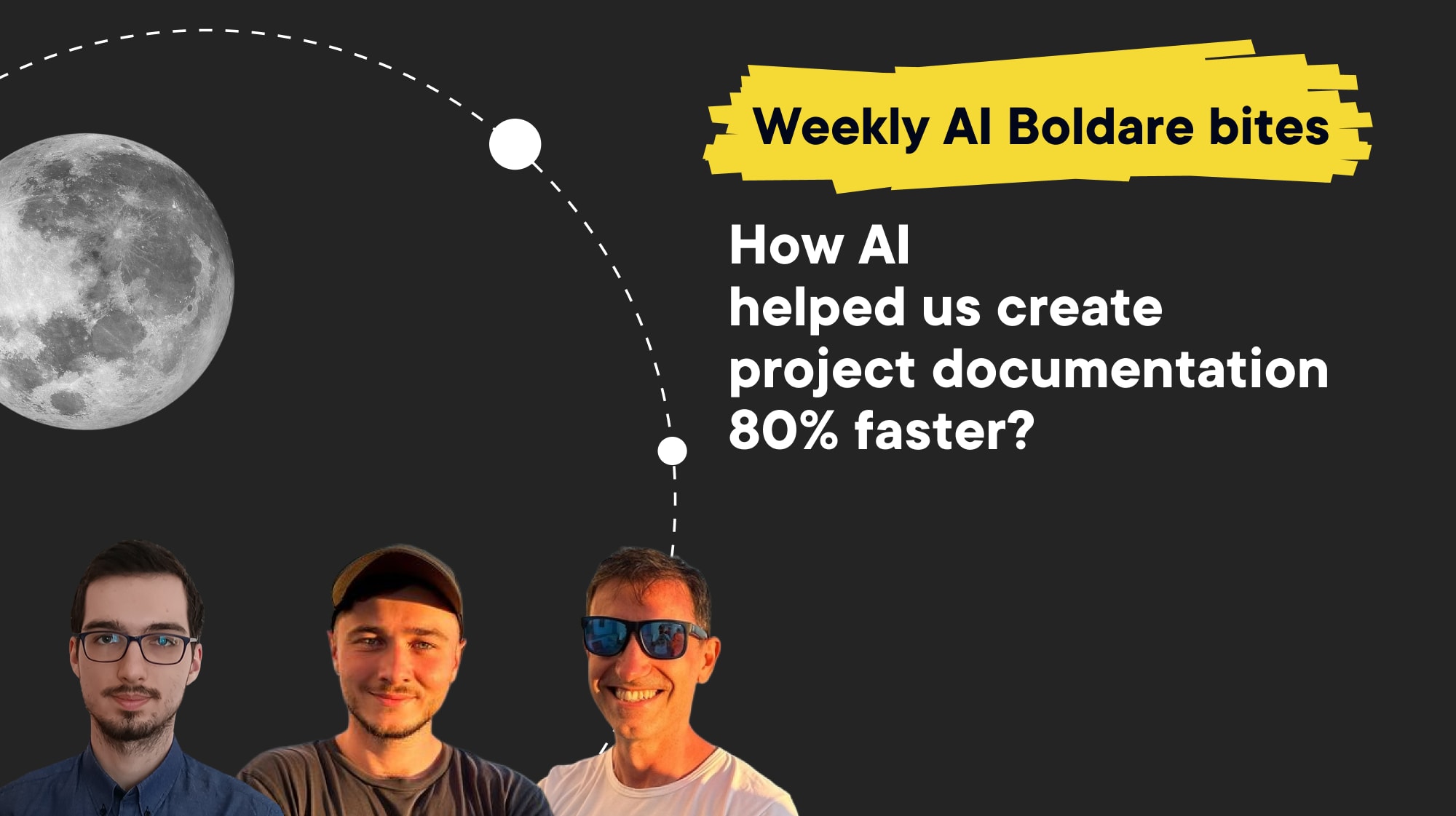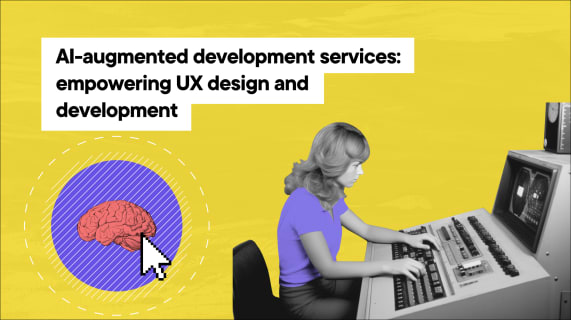How AI helped us create project documentation 80% faster? A practical guide
AI is everywhere – but what’s it really like on the frontlines of AI implementation? Get into the daily thoughts and challenges faced by AI engineers – the real stuff that happens when AI meets digital products.
Weekly AI Bites is a series that gives you direct access to our day-to-day AI work. Every post comes straight from our team’s meetings and Slack, sharing insights, tests, and experiences we’re applying to real projects. What models are we testing, what challenges are we tackling, and what’s really working in products? You’ll find all of this in our bites. Want to know what’s buzzing in AI? Check out Boldare’s channels every Monday for the latest weekly AI Bite.

Table of contents
This article was created by Przemysław Polak, Szymon Kopa, and Karol Kasprzak.
As developers, we’re all familiar with the challenge of balancing high-quality code, meeting deadlines, and, of course, documenting everything. The issue is that documenting each new feature can feel like an endless task that drains time and energy – time we’d much rather spend coding. The more time we dedicate to documentation, the less we have to build the features that actually deliver value.
How can we reduce effort without sacrificing quality?
We tackled this issue by exploring AI tools to streamline the documentation process. The results were remarkable: we reduced the time spent on preparing documentation by 80%, while improving its accuracy and relevance by five times. Most importantly, we achieved this at a fraction of the original cost.
The balancing act: coding vs. documentation
Our client had strict requirements – documentation was a crucial part of their KPIs, and although it followed a standard process, it presented challenges. We primarily used Word for documentation, which created issues with collaboration and version control. Preparing documentation for just one feature took between 45 and 60 minutes. This was a significant inefficiency, especially given our goal of delivering speed and efficiency.
The AI-powered solution: automating documentation
AI tools turned out to be the perfect solution to optimize workflows and improve productivity. We developed a system where AI takes care of much of the “dirty work” of creating documentation. Here’s how it works:
1. Code-based content generation\ AI technologies, such as intelligent code completion, analyze source code (controllers, modules, cron jobs, adapters) and automatically generate documentation. This saves considerable time because, traditionally, developers would need to manually write descriptions for each feature. With AI-assisted tools, we automated the documentation process, allowing us to focus more on enhancing creativity and refining the code.
2. Markdown for simplicity and flexibility\ Rather than using cumbersome Word documents, we adopted Markdown. This simple format makes it easier to collaborate and store documentation in repositories. Changes are reflected immediately, and version control becomes much more straightforward. By integrating AI into our coding practices, we were able to streamline collaboration and speed up documentation updates, reducing the risk of confusion from incompatible versions.
3. PDF conversion for client needs\ With the help of a script that automatically converts documentation into the required PDF format for the client, we could deliver the final materials without the need for manual formatting. This approach is perfect for companies that require documentation in a specific format but want to avoid the hassle of manually adjusting styles.Key benefits of using AI for documentation
Key Advantages of Using AI in Documentation
Thanks to the introduction of AI-powered development tools, the process of creating documentation has become faster, more cost-effective, and easier to manage. Specific benefits include:
- Reduced Documentation Time: Instead of 45–60 minutes per feature, it now takes only 5–10 minutes.
- Low Documentation Cost: The entire documentation costs us less than $1 per feature, leading to huge savings.
- Quick Implementation: The whole solution was developed and tested for just $15–30 – a cost that quickly pays for itself in terms of time and financial savings.
- Solid Documentation Base: Documentation generated by AI provides a great foundation that can easily be edited to suit the specific needs of the team and project.
Limitations and challenges of AI in documentation
While AI is a game-changer, it does have its limitations:
- Prioritization issues: AI doesn’t always prioritize information correctly, sometimes leading to redundancy, especially when documentation needs to be concise and clear.
- Rigid structure: The required structure imposed by the client limited the usefulness of the documentation for ongoing development. Moving forward, we may need to consider more flexibility in this area.
- Timing of documentation: The best results occur when documentation is created in real-time as features are being implemented. Delays in the process can result in lower-quality output.
What’s next: future steps for AI-driven documentation
We’re not stopping here. Given the success of our approach, we already have several ideas to further develop this process:
- Automated Documentation Generation: We want every code change to automatically trigger the creation of corresponding documentation, much like how AI-powered agile practices enable continuous integration and deployment.
- Monitoring Documentation Use: By analyzing how often the documentation is used, we can better align it with the team’s actual needs.
- Expanding the Solution: Our goal is to make our technology adaptable to other projects and organizations, promoting the broader adoption of AI in development processes.
Conclusion
This example demonstrates how AI-powered coding tools can support teams by saving time, reducing costs, and improving the overall quality of their work. By automating tedious tasks, we can focus on what really matters – delivering features and solutions that meet client needs. All of this is made possible with technology that not only supports but actively accelerates the process.
AI integration in development workflows allows for automating repetitive tasks, enhancing coding practices, and speeding up development. The collaboration between humans and AI is paving the way for more efficient, creative, and high-quality software development. As we move forward, AI as a coding partner will continue to evolve, making software engineering roles more dynamic and impactful.
Share this article:





